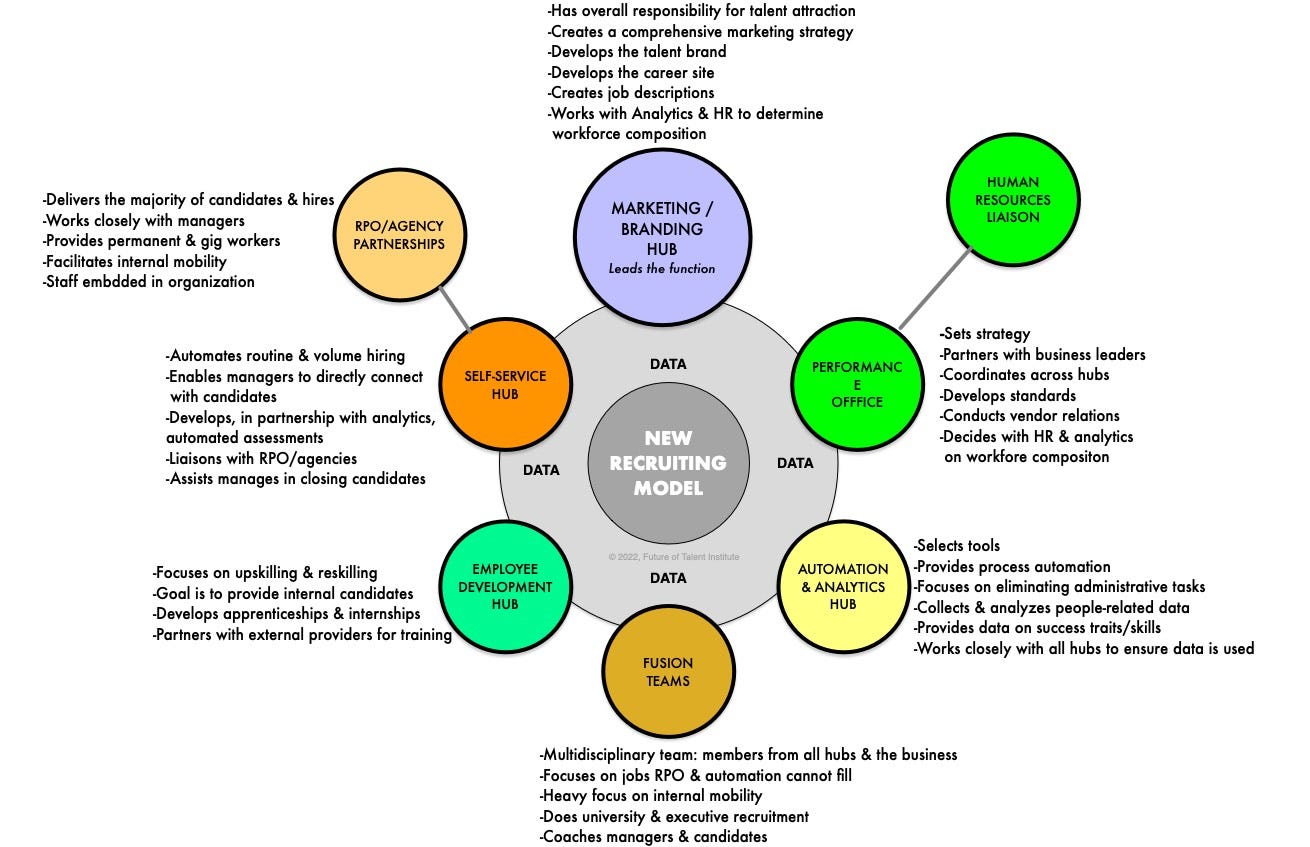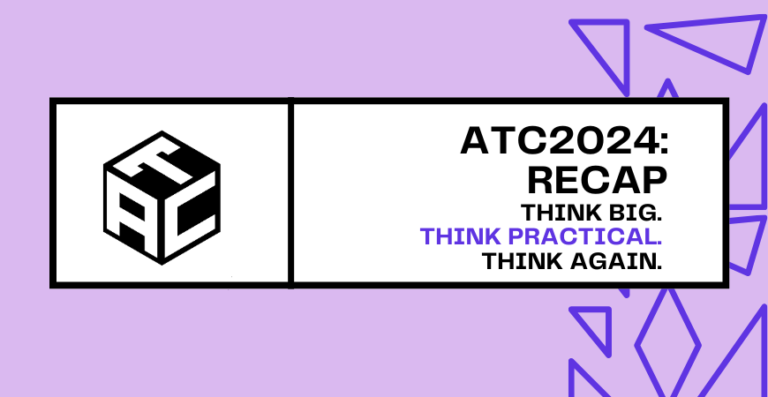The year 2023. Everything begins to change. While we have had applications that used algorithms for years, we have never had the capabilities of ChatGPT.
ChatGPT and other similar LLMs will reshape how we source, assess, engage, onboard, and do talent forecasting and planning. These tools open entirely new areas for research and for more precisely predicting the skills we need now and in the future. They will give us confidence to think outside our traditional mindset by providing data to support our thinking.
The Challenges We Face
Recruiting faces many significant challenges. Some are well documented, and some are sleepers – ones that will creep up on us but that will alter how we work.
Demographics
One of the sleepers is the shrinking populations of most North American and European countries and China. We are not replacing our populations through birth, only through immigration. Without a robust and deliberate immigration policy, we will have fewer people and fewer skills over time. Most European countries resist immigration, and the U.S. policy is constantly changing, especially toward allowing skilled immigrants. The fear is that immigrants take jobs from existing workers.
In some cases, this is true as immigrants are often willing to work for lower wages for a while. But this impacts a small number of current jobs, and the benefits far outweigh this. Also, many immigrants are not skilled in the areas that are growing and have talent challenges but fill roles that existing workers do not want to do. The lack of immigration may not be a problem for a few more years, but we already know how hard it is to find people with the experience, skills, and wisdom we need. This will only continue to worsen.
Worker Expectations
Workers are changing, too. They expect very different working conditions than previous generations. Younger workers are comfortable with remote work and technology and focus more on results than work hours. This will require significant changes in how organizations are structured and how leadership expects employees to act. Performance measures must focus on outcomes, not on time, to attract these younger workers. Organizations will need to hire people no matter how they wish to work if they have the required skills. Compensation systems and H.R. policies will need to accommodate these changes.
Four-Day Workweek
In 1940, the Fair Labor Standards Act reduced the workweek to 40 hours in the United States. In 1948, Australia established a 40-hour week, and Canada did so in the 1960s. The eight-hour workday was made law in the U.S. in 1869. This made sense in an economy primarily focused on manufacturing and farming, where the hours worked directly impacted productivity. This is no longer necessarily true.
While hybrid work has become more common, many CEOs are asking workers to return to the office full-time. However, employees are feeling overworked, and stress levels are high. With AI to augment work, a single worker can do more in less time. According to a recent study, in an experiment in Ireland where workers worked a four-day week, there was no decline in productivity, and “workers reported lower levels of stress, fatigue, insomnia and burnout, and improvements in physical and mental health.”
It is time for another change in working days. It makes sense that rather than forcing workers back into a five-day workweek or fussing with hybrid work, organizations realize that AI and automation have made five days unnecessary and that a four-day workweek solves many issues. This will start happening in 2024-2025, although some firms have already adopted it.
Circular Supply Chain
The talent supply chain is also changing. Rather than focusing almost solely on new hires, we will need to shift our focus to the circular supply chain – developing and hiring our current employees into new positions and re-recruiting alumni employees. Upskilling and reskilling will be required to fill the talent gaps and improve employee engagement and retention. Recruiters and HR need to set goals for a desired number and type of internal moves and influence hiring managers.
Global Workforce
We will need to expand to global recruiting, hire people no matter where they are, and allow them to work virtually. There are talented, skilled workers scattered around the globe. South America, Central Europe, and Africa all have underemployed graduates willing to work virtually. For example, in Africa, The Bulb is working to both educate and find employment for skilled talent. This report surveys the skills available globally. We need to develop better sourcing and recruitment skills to find and hire these people, and H.R. policies and compensation issues need to be changed to accommodate them,
The Opportunity
We have an opportunity to reinvent talent acquisition, but I am fearful we will not.
It is easy to be complacent and take comfort in the belief that even though bots are everywhere, they will never be able to replace me for I am unique and offer a human touch that AI cannot duplicate. I can communicate and engage at a level that A.I. cannot. Hiring managers and candidates want a human face. I dispelled these myths in my article last week. Believe it or not, most people, especially younger candidates, enjoy the speed and accuracy of bots and find them less biased than recruiters.
The Phoenix: What Can Rise From The Ashes of the Old Recruitment Function?
We need to change our mindset about what a recruiting function looks like and what it does. A new era is dawning in light of the challenges and the technology.
The current recruiting skills, such as writing job descriptions, posting jobs, sourcing, reviewing resumes, identifying skills and ranking candidates, interviewing, scheduling, and onboarding new employees, will fade away or be so augmented that they become a minor part of the work.
If we do not change will go the way of dodo birds into extinction.
The new recruiting function is not yet well defined. We will need to experiment, try different approaches, and learn quickly how to adapt. Remember, Darwin said that those who survive and those who adapt the fastest to changing circumstances.
We will need a smaller recruitment staff of highly skilled strategic thinkers. People with strong communication and influencing skills, who can leverage data to influence, and who can anticipate skills needs and be agile enough to adapt quickly to new technologies and demands. We must use predictive and prescriptive analytics to provide leaders with talent market data and advice.
We need to empower hiring managers and teach them to use the tools that are available. The new tools will enable hiring managers to do most of their hiring without any assistance from recruiters.
Within a decade, technology in the hands of a hiring manager will be able to find, engage, assess, and hire most routinely filled positions. This includes huge numbers of workers, including those in hospitality, food service, health care, retail service, transportation, manufacturing, call centers, logistics, warehousing, and many more.
This is a possible model of a modern recruiting function for a large organization. Each circle does not necessarily need to be staffed with a permanent employee. Each of these functions may need only one or two people, and they could be contractors or outside consultants on retainers.

Recruiting of mid-level professionals can be outsourced to the growing capabilities of RPOs. I call this Recruiting-as-a-Service (RAS). Outsourcing all recruitment to a RAS firm or equivalent enables organizations to take advantage of the latest technologies and innovations without the need to invest in the infrastructure. As mentioned above, there will be cloud-enabled self-service for many roles. Graduate and executive recruitment may remain inside the firm, but this requires only a few people when augmented with technology.
We need also to remove the constraints that impede quick, efficient recruiting. For example, there may be too many unnecessary interviews. There may be administrative actions that slow the process. We must ask what we must stop doing and what we can improve. We must vigorously locate any steps or processes slowing us down, redesign the process, change policies, or retrain staff.
The Future
Recruiting has a bright future – but only if we redesign it starting now. We need strategic, data-driven processes, predictive analytics, and more awareness of the external factors limiting us and affecting our ability to perform.
This article was originally published in the Future of Talent Weekly Newsletter and has been re-published here with permission.







